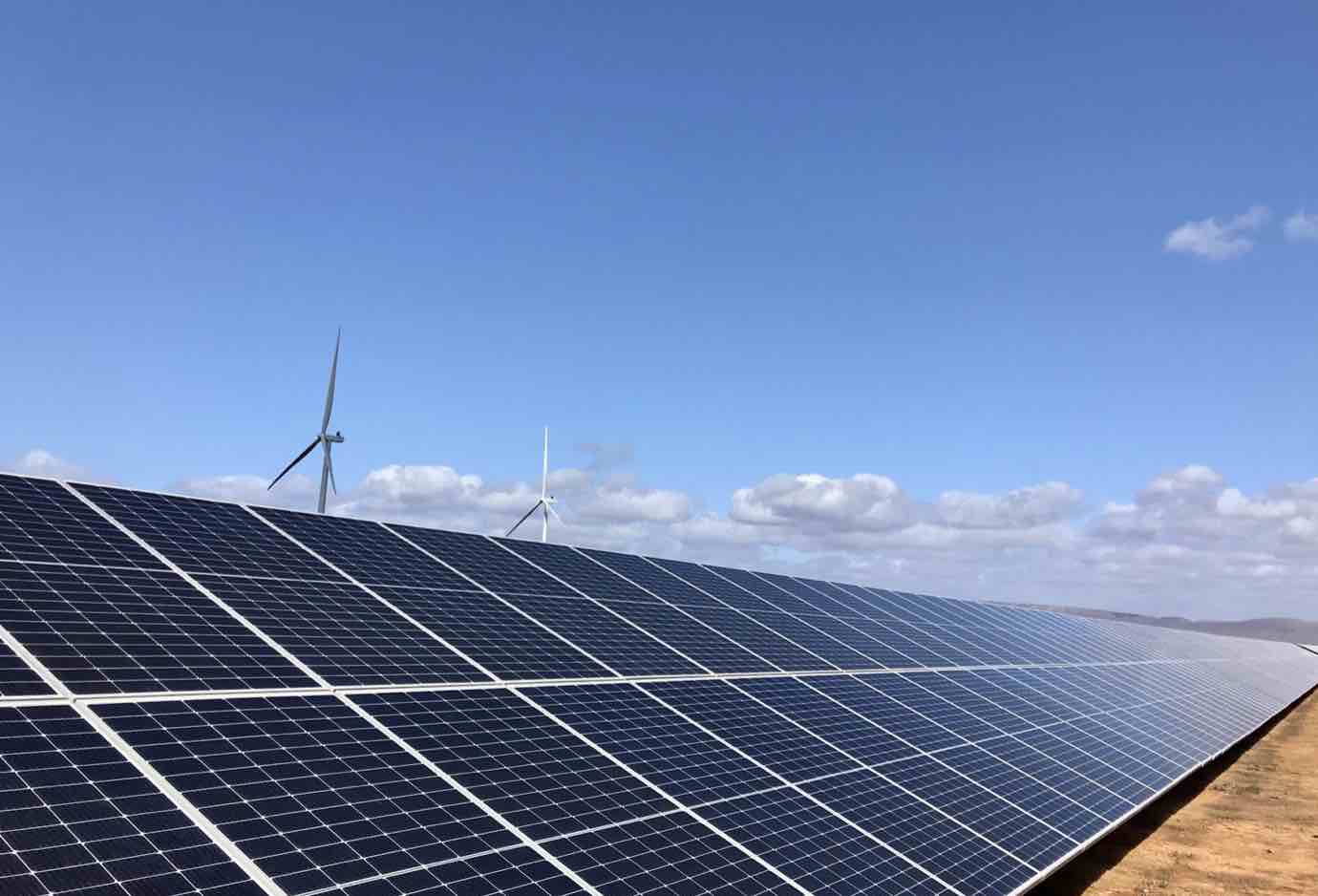The Indian-based Sterling and Wilson Renewable Energy, the biggest EPC contractor for the solar industry in Australia and one of the biggest in the world, has revealed it has been hit by claims of liquidated damages and is also suffering from the impact of soaring module and transport costs.
Sterling and Wilson is a relatively new entrant into the Australian market but has rapidly built up a portfolio of more than 1.1GW, and a global portfolio of more than 11GW.
In Australia, these include the country’s biggest solar project to date at Western Downs, along with the Gangarri and Columboola projects in Queensland, and the solar component of the Port Augusta Renewable Energy Park, (pictured above), the biggest wind and solar hybrid facility currently being built in Australia.
Sterling and Wilson revealed in its latest quarterly accounts this week that its contracting subsidiary and its overall business were now running at a loss because of the combined impact of rising construction costs and liquidated damages claims.
“Gross margins (were) impacted significantly, primarily on account of (an) increase in modules prices and accounting for liquidated damages cost based on settlement done/ under discussion,” it said in its report.
“The construction activities at various sites witnessed a slowdown as per the directives issued by various regulatory authorities which has led to an increased cost of construction (including rise in module and commodity costs) as well as overheads due to extended time.
“Owing to these factors, the Group has faced liquidity challenges during the quarter,” it added.
Those comments may raise alarm bells in Australia, which has seen numerous solar EPC contractors collapse (spectacularly in the case of RCR Tomlinson) or withdraw from the industry because of costs and delays, much of it around connection and commissioning issues.
There are persistent rumours of further troubles in the industry, with many fretting about the impact of ongoing connection delays, and the impact of Covid-19 on supply chains.
Sterling and Wilson, however, appears protected by its deep-pocketed new shareholder, Reliance New Energy, part of the massive Reliance Industries Indian conglomerate, which bought a 40 per cent stake in the company last year and which has offered an “indemnity” against such claims.
Liquidated damages are often claimed by project owners against contractors to cover some or all of the revenue lost through delays in construction or connection or commissioning. They often lead to counter claims and legal disputes.
Sterling and Wilson does not identify which projects – or indeed which country – are the subject of the new liquidated damages claims, although Gangarri, owned by Shell and that company’s first solar project in Australia, and Columboola are both behind schedule.
Neoen, which owns Western Downs, this week flagged it should be covered by liquidated damages if that project is not commissioned on time, although it was hopeful the project was on track despite the fact that most of the modules had yet to arrive on the site.
(In an update to our story the other day, we are now informed that Western Downs has, in fact, been injecting small amounts of power into the grid from the modules that have been installed).
The Sterling and Wilson accounts say a “subsidiary company has received intimation for liquidated damages from two of its customers for an amount of approximately Rs 189.06 crore”, which is equivalent to around $35 million. Sterling and Wilson says it has made a counter claim of around Rs101 crore (or $19 million).
It also cites a claim of Rs 93.51 crore (about $17 million) from “a significant subcontractor in a particular geography” that filed for bankruptcy before the end March, 2021. Again, it is not identified.
Sterling and Wilson says it has made a counter claim on the subcontractor for an amount of Rs 171.19 crore “for noncompliance with contractual obligations.”
In March last year, the Perth based Davis Contracting, which had a major role at Gangarri, announced it had filed for bankruptcy, leading to major job losses, and sparking claims from unions of a “cowboy” industry in the solar sector. See our report into solar industry problems here: Hung out to dry: The dark side of big solar
Sterling and Wilson also highlighted the extent of the problems in soaring costs in solar modules, in the commodities used for their various components, and in freight.
This graph above from their presentation to analysts highlights the big jump in module costs, and shipping costs over the past 18 months, which have jumped nearly 10 fold before easing back slightly. Steel, aluminium and copper prices have also jumped significantly.
Sterling and Wilson said prices have softened in January, but continue to be at an elevated level. “We expect prices to stabilise by H1FY23 which will drive the growth in order finalizations,” it said.











